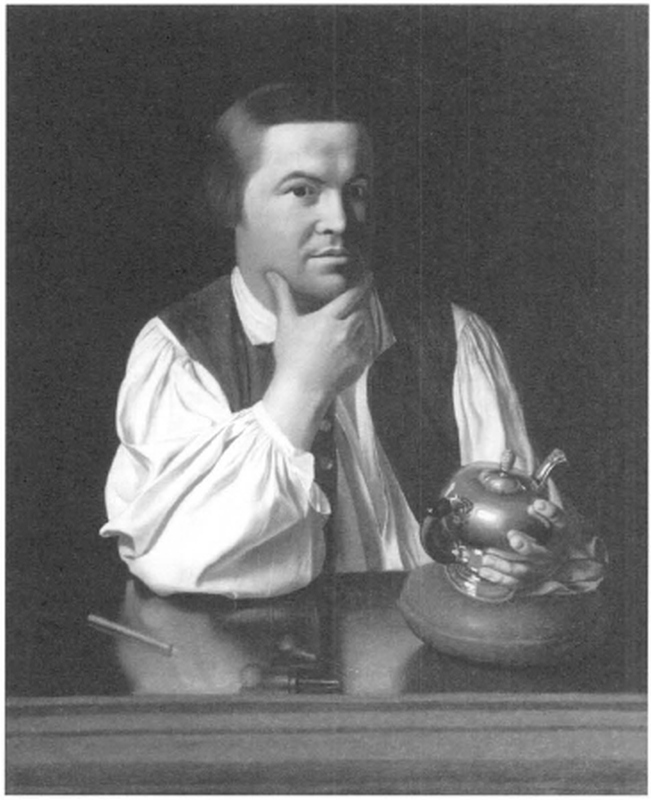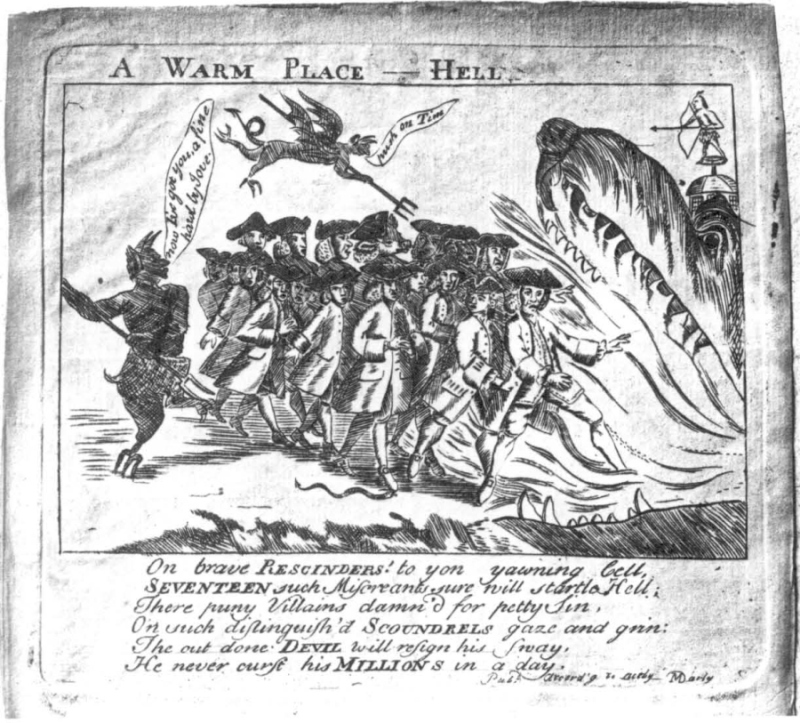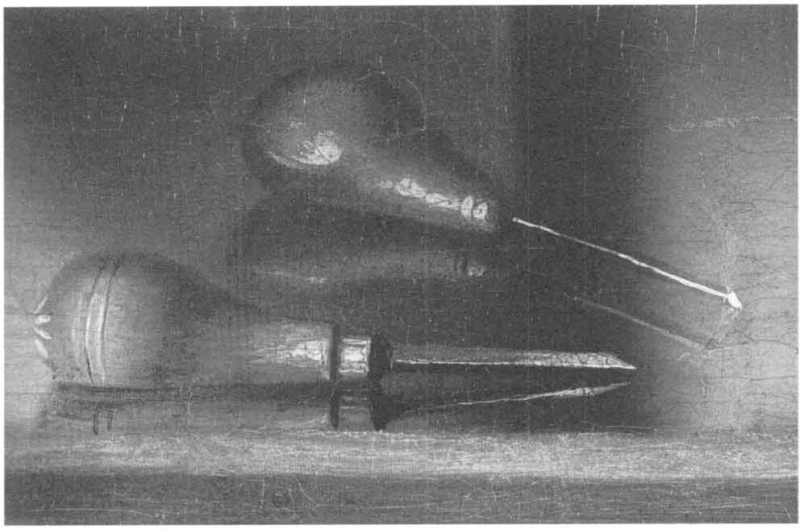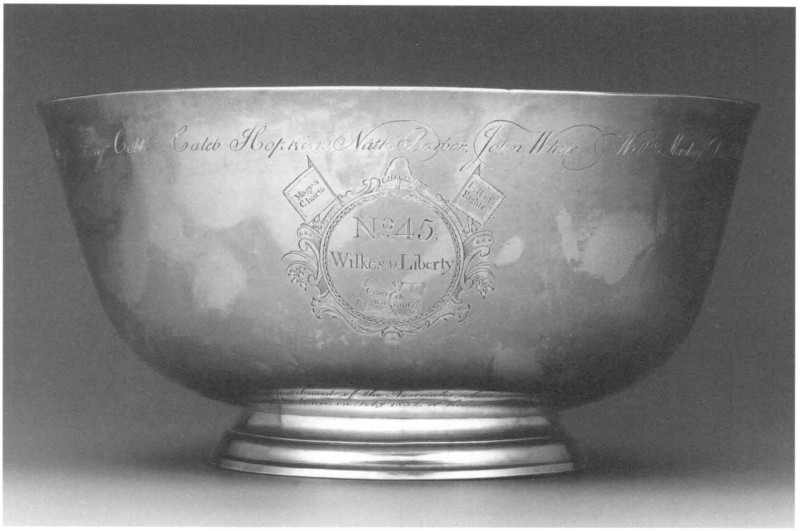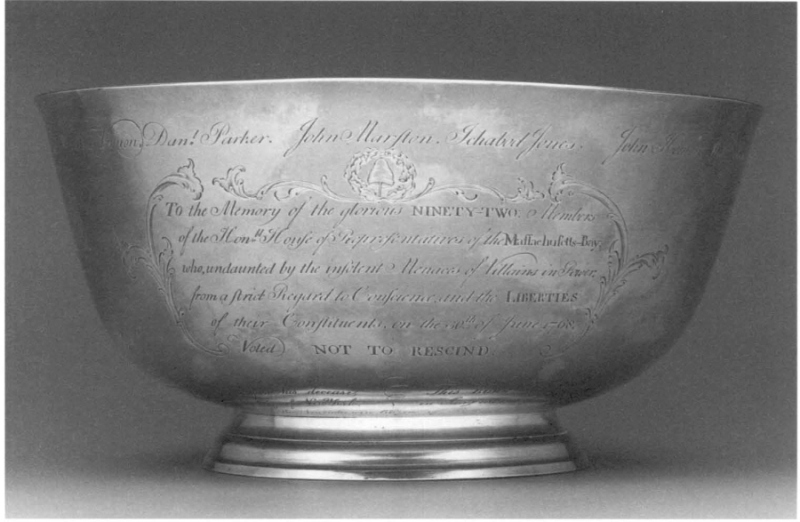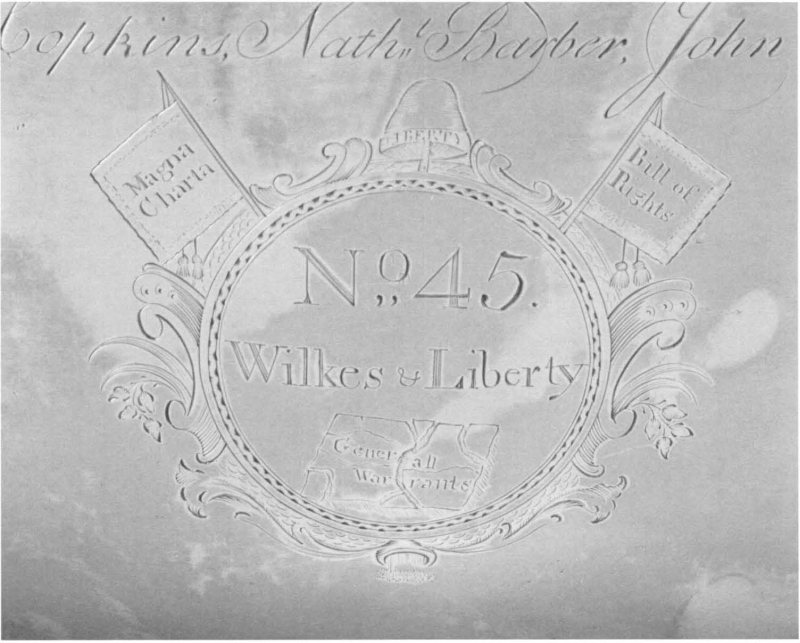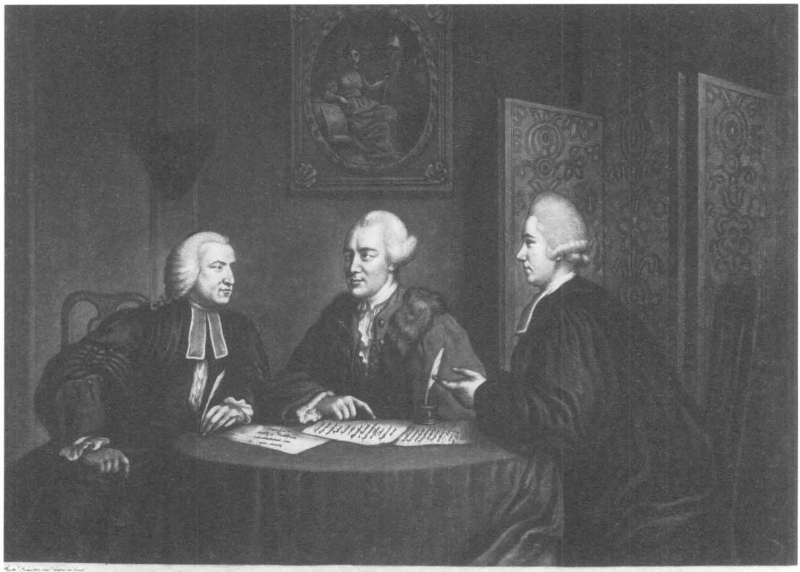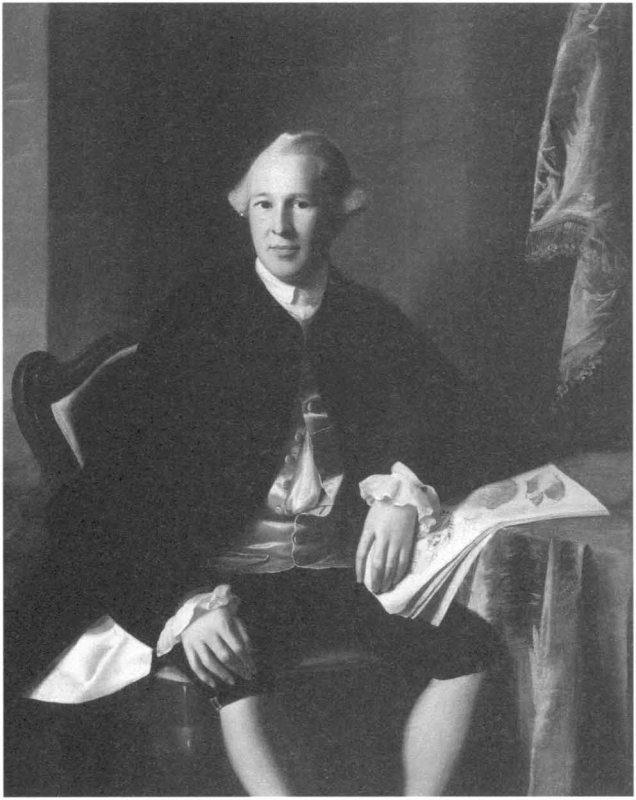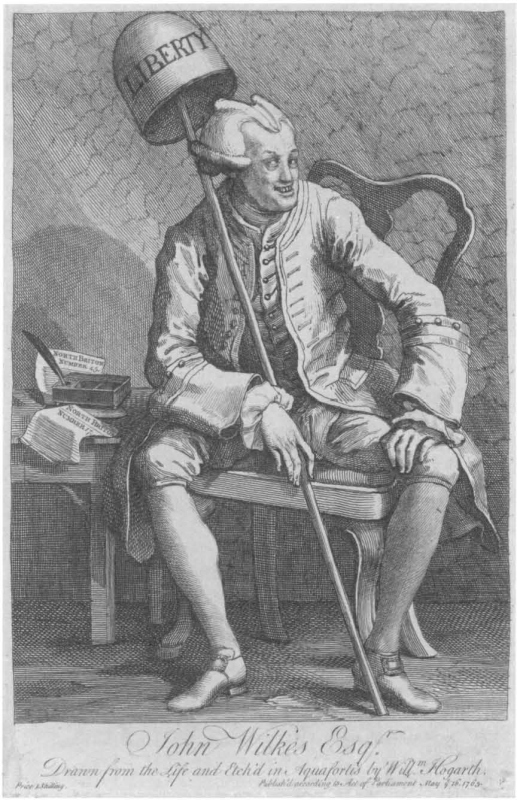Paul Revere and 1768: His Portrait and the Liberty Bowl
Jonathan L. Fairbanks
The Museum of Fine Arts, Boston, possesses perhaps the two greatest icons of Boston art and history: the John Singleton Copley portrait of Paul Revere and Revere’s silver Sons of Liberty Bowl. These two precious objects have captivated scholars and connoisseurs as preeminent examples of their creators’ skills and rare survivors from the moment of our nation’s birth. Not until recent discoveries revealed that the two masters created their pieces separately but both in 1768, however, could viewers fully appreciate the meanings shared between the objects. A series of tumultuous political events made 1768 a turning point on the path toward American independence; a reexamination of the portrait and the bowl in that light brings into view previously unnoticed political symbolism—meanings otherwise lost to us but powerfully obvious to the Bostonians who lived through the events leading up to the Revolutionary War.
In 1995, in preparation for a Copley exhibition at the Museum of Fine Arts, museum staff set about cleaning the portrait of Revere (fig. 1). Jim Wright, Head of Paintings Conservation, and Jean Woodward, Associate Painting Conservator, discovered an inscription on the lower right edge of the painting (fig. 2): Copley’s initials and the date, 1768, rendered in miniature. Before this discovery, generations of historians had surmised that Copley made the portrait circa 1770. Off by just a few years, the supposition had led interpreters to miss both the historical significance and emotional poignancy of the portrait.
The year 1768 constituted a turning point in Boston politics, marked particularly by the unification of Whig loyalties. Many observers understood it as the year that, under the slogan of liberty, reason became the means to persuade the colonies to band together in the resolution to free themselves from unjust demands and taxation from abroad. Whigs used every form of influence on public opinion to promote their cause: mob action, public notice, legal opinion, party caucuses, secret clubs, public celebrations and toasts, illuminations and displays, political prints, satirical songs, and newspaper editorials and all manner of written persuasion.1 Public and private gatherings celebrated the communal values that emerged with the patriotic mindset.
Fig. 1. John Singleton Copley (1738–1815), Paul Revere (1734–1818), 1768. Oil on canvas; h. 35⅛ in., w. 28½ in. Museum of Fine Arts, Boston, Gift of Joseph W., William B., and Edward H. R. Revere (30.781).
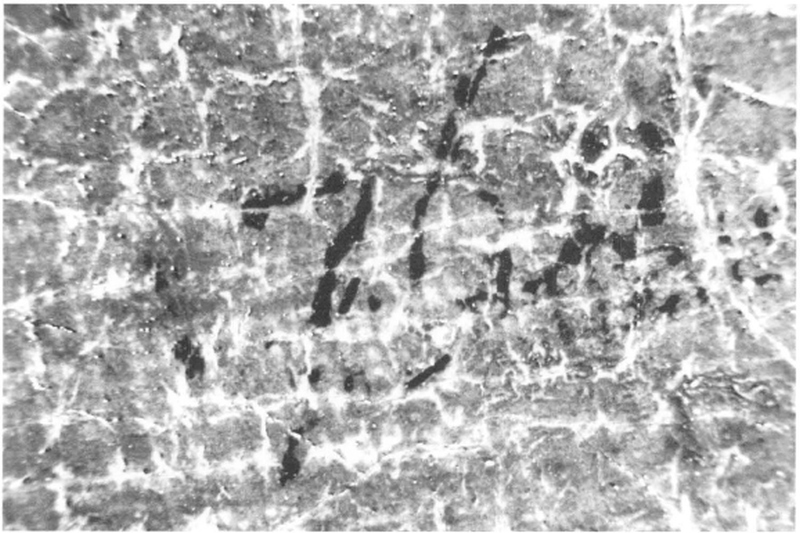
Fig 2. Enlargement of photomicrograph of data inscribed by Copley in the lower right corner of his portrait of Revere (fig. 1)
Fig. 3. Paul Revere (1734–1818), A Warm Place—Hell, Boston, Massachusetts, 1768. Engraving; h. 3⅜ in., w. 415⁄16 in. Courtesy, American Antiquarian Society.
A primary rallying point for Whig sentiment arose early in the year, when the Massachusetts House of Representatives sent out a document known as the “Circular Letter” on February 11. This letter, distributed to the legislatures of all the colonies, decried the Acts of Parliament that levied taxes on the colonies.2 By early summer, Governor Bernard demanded that House members rescind their letter; should they fail to do so, he threatened, he would dissolve the General Court. Brought to a vote on June 30, the letter won an unhesitating reaffirmation: ninety-two members voted not to rescind. For the seventeen who cooperated with the governor’s demands, Revere issued a print entitled A Warm Place—Hell (fig. 3). It shows a devil using a pitchfork to drive seventeen men into the mouth of Hell, represented as the yawning, fiery jaws of a monster. Above flies a demon crying “push on Tim,” referring to Timothy Ruggles, one of the active Loyalists.3
These events were accompanied in Boston by prolific debates in the press, often conducted by a few central players who guarded their identities with pseudonyms. “A True Patriot,” who was Dr. Joseph Warren (see below), needled Bernard to the point that the governor hoped to have his writings declared treasonous. Sam Adams, using the name “Populous,” also took part. By mid-summer, popular protest erupted in acts violent and symbolic, including effigies hanged in the Liberty Tree. On July 11, the Liberty Song appeared in the pages of the Boston Gazette.
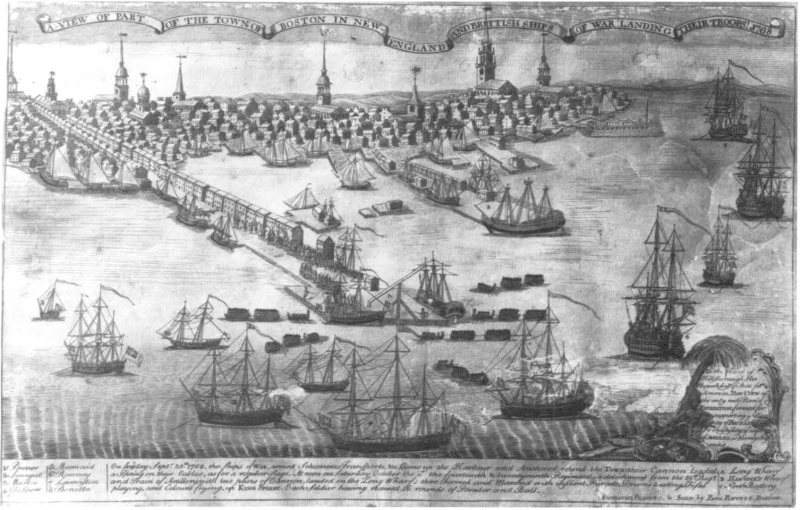
Fig. 4. Paul Revere (1734–1818), The town of Boston in New-England and Brittish (sic) ships of war landing their troops, Boston, Massachusetts, 1770. Engraving; h. 7⅝ in., w. 12 in. Boston Athenaeum (A/B64B6/Hil.1770x).
The conflict escalated even further in the fall. On September 30, ships arrived from Halifax with British Regiments and detachments of the Royal Artillery; disembarked at the Long Wharf, the soldiers occupied the city. Revere captured the outrage of Bostonians, who mostly still saw themselves as loyal British subjects invaded without just cause, in his subtle and sarcastic landing print (fig. 4). Merging mock humility and respect for authority, he dedicated the print to the earl of Hillsborough, whom he cites as the British minister responsible for the only well-planned expedition chastening the insolence of America. The print depicts an Indian princess, America, with her foot on the face of a grenadier, mocking authority. The legend describes the landing with
the Ships of War, armed Schooners, Transports, &c. Came up the Harbour and Anchored round the TOWN; their Cannon loaded, a Spring on their Cables, as for a regular Siege. At noon on Saturday October the 1st the fourteenth & twenty-ninth Regiments, a detachment the 59th Regt. and Train of Artillery, with two pieces of Cannon, landed on the Long Wharf; there Formed and Marched with insolent Parade, Drums beating, Fifes playing, and Colours flying, up KING STREET Each Soldier having received 16 rounds of Powder and Ball.4
The British troops would remain quartered in Boston until George Washington drove them out with cannon aimed from Dorchester Heights on March 17, 1776. Ever since, Boston has celebrated the occasion as Evacuation Day.
Seventeen sixty-eight ended unhappily in Boston, with no resolution having been reached between Whig and Tory. Through non-importation agreements, patriotic Bostonians had embarked on a campaign of boycotts, refusing to buy English-made goods, but it was only the beginning of the struggle. The increasing polarization would drive apart colonial Boston’s social structure, in many cases separating otherwise friendly and compatible townspeople. The relationship between Revere and Copley was no exception, and these two representative pieces—the Liberty Bowl and the portrait of Revere—bespeak, both boldly and subtly, the commitments each man pursued as their world changed.
Copley and Revere were about thirty and thirty-three years of age respectively when they sat facing each other virtually knee to knee for this portrait. They were friends and artistic associates, but they inhabited distinctly separate professional worlds. Revere was a tradesman/craftsman; Copley aspired to raise himself above such classification to that of gentleman. That difference, however, could in no way anticipate the separation prompted by their increasingly opposed political allegiances. Revere made the decision to resist the mercantile and tax stranglehold of the mother country, choosing danger and treason over submission to tyranny—although his vindication as a victorious patriot was still years away. Copley found himself torn between loyalty to the Crown and sympathy with the colonies and his friends.5 Within a year he would marry into a Tory family whose Loyalist connections would decide his own. In a few years the two men would be separated by the Atlantic Ocean, never to see each other again.
While one can read the events of the year very clearly in the Sons of Liberty Bowl, as demonstrated below, the presence of 1768 in the Copley painting requires a more thoughtful study. Previously widely admired as the image of an American patriot/ craftsman at work or at a contemplative moment of thoughtful creativity, the portrait shows Revere in a frontal pose with tools laid out on a table before him. In his left hand, he holds a double-bellied or pear-shaped teapot, which rests on a sand-filled leather pad (fig. 5) that served as a fulcrum when a smith needed to manipulate an object for engraving.6 The tools pictured are two wooden-handled, steel-shanked burins with sharp points for engraving, and a needle set in a wooden dowel used in preparation for engraving by scratching designs on the silver. Other details in the painting, however, suggest that Revere is not in the midst of working. In a contemplative pose, he rests his chin in his right hand. The sleeve of his luxurious white linen shirt billows below what seems to be a dark green, silk vest apparently embellished with gold buttons. These are not, as some scholars have surmised, working clothes. At work Revere would have worn a soft leather apron, essential for rubbing clean the surfaces of his hammers. Nor is the reflective mahogany surface on which he rests his elbow a workbench.
There is, in fact, a decidedly artificial construct in the composition of Revere’s pose, the polished appearance of the table, and the arrangement of some implements of his trade before him.7 Copley seems to capture the political tensions of Boston in 1768 and the choice of loyalties both artists faced; he depicts his friend balanced between symbols of Tory and Whig—the teapot and the linen sleeve—and contemplating the highly charged situation. The boycott against goods imported from England—including tea and linen—shaped economic and social life in 1768. In response to needs for home industry, young women near Boston collaborated to produce 100 score of fine white linen to demonstrate independence from English products.8 Is Revere’s conspicuous shirt sleeve a symbol of Whig loyalty? In his other hand, however, he holds the teapot, symbolic of Tory taste.9 No Whig in Boston would be caught serving tea. But Revere did take orders from both Whig and Tory, and possibly the manufacture of a teapot represented home industry to him. Nonetheless, he made far fewer teapots before the Revolution than after. The object seems suggestive more of Copley’s affinities at this time than Revere’s, and—intended or not—it provides a balance for the prominent linen sleeve. Copley’s initials and date, however small, acknowledge the significance of the year and the portrait he is painting, but their diminutive size may also indicate his ambivalence: he is perhaps uneasy about seeming to be too familiar with a person whose views were radically whiggish.
During the same year that Copley painted Revere’s portrait, Revere made his silver Liberty Bowl (fig. 6), commissioned by some of the Sons of Liberty, kept at Nathaniel Barber’s insurance office in the North End, and used for their covert assemblages at the Bunch of Grapes Tavern and the Green Dragon Tavern, also in the North End. Engraved on the rim of the bowl were names of its joint owners, all radical Whigs. They were primarily merchants of the middling sort who felt their livelihoods threatened by the King’s policies.10 Most of these men later appeared in London’s list of enemies. The names that appear on the rim of the bowl suggest that the movement was pluralistic—a genuine people’s movement. There were modest property owners—small merchants, tradesmen, tavernkeepers, a mariner, a distiller, and a woodcarver—many of whom had their lives and work tied closely to wharves, docks, and the marketplace: Caleb Hopkins, Nathaniel Barber, John White, William Mackay, Daniel Malcolm, Benjamin Goodwin, John Welsh, Fortescue Vernon, Daniel Parker, John Marston, Ichabod Jones, John Homer, William Bowes, Peter Boyer, and Benjamin Cobb. Although influenced by more well-to-do Bostonians, the movement was not dominated by the few public figures, such as Sam Adams or Joseph Warren, who also belonged. Paul Revere himself was a small-time tradesman at the time. Only later did he become a major industrialist.
Fig. 6. Paul Revere (1734–1818), Sons of Liberty, Bowl, Boston, Massachusetts, 1768. Silver; h. 5½ in., diam. (base) 513⁄16 in., diam. (lip) 11 in. Museum of Fine Arts, Boston, Gift by subscription and Francis Bartlett Fund (49.45).
One man, Daniel Malcolm, can serve as an example of the typical Son of Liberty. Malcolm, a merchant whose wines were presumed to have been smuggled, earned the hatred of Lt. Gov. Thomas Hutchinson for his class and his political views. Much fuss occurred when customs officers attempted to seize Malcolm’s goods but found themselves barred from entering the warehouse without a search warrant. By the time they obtained the warrant, the wine had disappeared. Malcolm died on October 23, 1769; his tombstone, carved by John Homer, stands on Copp’s Hill. The inscription immortalizes his support for the cause of Liberty: “A true Son of Liberty / A Friend of the Public / An enemy of Oppression / And one of the foremost in opposing the Revenue Acts on America.” The marker observes further that he is buried in a stone vault ten feet deep—too deep for anyone, especially Tories, to disturb. The stone appears to be pockmarked with musket ball damage, perhaps caused by British troops using it for target practice.
Revere’s work as a patriot has survived both in artifact—including but not limited to the Liberty Bowl—and of course in popular memory. He participated in many if not all of the groups dedicated to American liberty. By the 1770s he had associated with or joined the St. Andrews Lodge of Freemasons, the Loyal Nine of 1766, the North Caucus, the Long Room Club, and the Boston Committee of Correspondence. He took part in the Boston Tea Party and his name eventually appeared on the London Enemies list.11 Only Joseph Warren belonged to as many political groups as Revere. In 1768, even the production of the Liberty Bowl constituted a daring act of defiance. Revere finished it within five weeks of the House’s vote against rescinding the circular letter, which the governor considered an act of insubordination.12 Revere’s rapid production of the bowl was a remarkable feat, since it would have taken hundreds of hours of hammering on a polished anvil and stakes simply to form the bowl, let alone engrave it. Yet it does not appear in his daybooks or anywhere in the extensive Revere family papers. Because business records and papers could be seized, Revere may have needed to hide his association with the Sons of Liberty. His secrecy proves the extreme danger in which he knew himself to be living and his understanding that the Bowl itself, decorated with patriotic slogans, could be a “treasonous” object.
Revere’s Sons of Liberty Bowl is monumental in scale for American silver of its period. Its design was probably inspired by the shape of a Delft punch bowl familiar to most colonials. This shape was, in turn, inspired by far eastern ceramics imported to England and the continent. The subtle s-shaped profile of its sides rises to a slightly flared lip. The foot or base is splayed and shaped with convex and concave moldings. The whole bowl stands 5½ inches high with a base diameter of 513⁄16 inches. The diameter at the lip is 11 inches. It weighs 43 ounces, 16½ pennyweight.13 Years of polishing have exposed “fire scale,” leaving a slightly cloudy coloration to the surface of the silver that makes the bowl look like it needs to be polished.
Although the bowl is the most celebrated example of American colonial silver even without the general public’s understanding of its historical context, its most important aspects are its particular symbolic features, both those worked into its form by the smith and in its use. For the most part, that symbolism rides on two numbers: forty-five and ninety-two. The cartouche engraved on one side of the bowl (see fig. 6) contains in its center a large “N 45. / Wilkes & Liberty” over a torn page labeled “Generall / Warrants,” referring to the arrest of Englishman John Wilkes, described below.14 A liberty cap tops the cartouche and two flags flank it, one inscribed “Magna / Charta” and the other “Bill of/ Rights.” Revere fashioned the bowl from forty-five ounces of silver and to hold forty-five gills of rum punch.15 The message on the other side (fig. 7) reads: “To the Memory of the glorious NINETY-TWO: Members / of the Honbl House of Representatives of the Massachusetts-Bay, / who, undaunted by the insolent Menaces of Villains in Power, / from a Strict Regard to Conscience, and the LIBERTIES / of their Constituents, on the 30th of June 1768, /Voted NOT TO RESCIND.”
45. / Wilkes & Liberty” over a torn page labeled “Generall / Warrants,” referring to the arrest of Englishman John Wilkes, described below.14 A liberty cap tops the cartouche and two flags flank it, one inscribed “Magna / Charta” and the other “Bill of/ Rights.” Revere fashioned the bowl from forty-five ounces of silver and to hold forty-five gills of rum punch.15 The message on the other side (fig. 7) reads: “To the Memory of the glorious NINETY-TWO: Members / of the Honbl House of Representatives of the Massachusetts-Bay, / who, undaunted by the insolent Menaces of Villains in Power, / from a Strict Regard to Conscience, and the LIBERTIES / of their Constituents, on the 30th of June 1768, /Voted NOT TO RESCIND.”
Bostonians would well and quickly have understood the precise meanings of all these references. In volume 45 of his periodical the North Briton, John Wilkes, a radical Whig in England, denounced policies established by King George’s servants the earls of Egremont, Halifax, and Grenville; unjust excise taxation; and “the late ignominious peace.” In fact, Wilkes had established himself as a champion of liberty with the opening sentence of the first issue, where he declared that “the liberty of the Press is the birthright of a Briton and is justly esteemed the foremost bulwark of the liberties of this country.” British authorities arrested Wilkes and conducted him to the Tower. Without warrant, officers of the Crown searched his house, broke into his furniture, and stole his private papers to obtain incriminating evidence. The courts put into motion Wilkes’s conviction for treason. Wilkes nonetheless defended himself at trial and won his release after he proved that the royal henchman had searched his premises illegally.
Wilkes’s story was well known among colonials, who read his letters to Bostonians in the Boston Gazette, and it made him a hero of the patriot cause. When Thomas Hutchinson wrote to Thomas Pownall, a much-liked former governor of the Massachusetts Bay Colony, in England in June 1768, he stated that
a certain Insurance Office in the North End where one Daniel Malcolm is a principal underwriter have resolved to address Mr. John Wilkes thanking him for the glorious confusion he is putting the Government into at home and praying he would afford them his continence and encouragement in the like measures here. . . . The office keeper Nathaniel Barber some time ago christened one of his children John Wilkes and No. 45 was Figured on the breast. From this state of Anarchy Good Lord deliver first you and then us.16
Bostonians fully understood that the actions taken against Wilkes constituted a violation of his civil liberties as guaranteed by the Magna Carta and the Bill of Rights (fig. 8). The references to Wilkes on the bowl indicate that the Sons of Liberty felt their civil rights were threatened by the policy of taxation without representation.
On June 23, 1768, when the Sons and Daughters of Liberty met in Roxbury and traveled in an impressively large gathering of carriages to the governor’s mansion in Boston, drinking their rum punch in a gesture of defiance, they further invoked John Wilkes with forty-five toasts. They addressed the first toasts, as was traditional, to “Our rightful sovereign GEORGE the Third. The QUEEN, the Prince of Wales, and the rest of the Royal Family”17 For the fifth toast, they raised their cups for “A perpetual Union of Great-Britain and her Colonies, upon the immutable Principles of Justice and Equity,” suggesting that they still saw themselves as Englishmen prepared to remain loyal subjects of the crown if their basic civil liberties were respected. The eleventh toast made clear their objections with the proviso that this union be based on immutable principles of justice and equity; it demanded “A speedy Repeal of unconstitutional Acts of Parliament, and a final Removal of illegal and oppressive Officers”—that is, General Gage, Governor Bernard, and other unpopular characters. Others toasts were raised to John Locke, Italian freedom fighter Pascal Paoli, John Dickinson (the Pennsylvania Farmer and author of the Liberty Song), and of course to John Wilkes himself (fig. 9). The final toast celebrates the “Assemblies on this vast and rapidly populating Continent, who have treated a late haughty and ‘meerly ministerial’ Mandate ‘with all that Contempt it so justly deserves’!” They concluded their festivities by singing the Liberty Song, the first patriotic music published in America.18 Toasts of this festive gathering were undoubtedly repeated at the Bunch of Grapes Tavern and the Green Dragon Tavern in the presence of the Liberty Bowl.19
Certainly the more seditious of the two inscriptions on the bowl, the motto celebrating “ninety-two” on the other side referred to the defiance much closer to home—the vote in the House not to rescind the circular letter. Not Revere’s composition, the lines still resist completely reliable attribution. They do, however, betray a resemblance to writings made under the pseudonym “A True Patriot” in the Boston Gazette on February 29, 1768. The overall style is consistent, and the emphatic capitalization of key words appears identical. Searching at the Massachusetts Historical Society for the likely author of these seditious writings, I was directed by Anne E. Bentley, the society’s curator, to the papers of Harbottle Dorr, a Son of Liberty and a Boston merchant who sold grind-stones on Union Street. Dorr saved newspapers and identified on each one who had written the anonymous articles. The person who called himself “A True Patriot” was none other than Revere’s friend Dr. Joseph Warren, who later perished at the Battle of Bunker Hill.
Fig. 9. Robert Saver, Mr. Serjeant Glyn John Wilkes, and the Rev Mr. John Horne, London, 1768. Mezzotint; h. 16⅛ in., w. 19½ in. Private collection. Photo, courtesy Museum of Fine Arts. Boston.
Warren’s articles so enraged Governor Bernard that he declared them slanderous and demanded that the House investigate and bring charges against the writer. Although Warren was careful not to name the target of his articles, everyone in Boston’s small community could recognize the public officers he criticized. For example, one of his articles began “May it please your person, no age has perhaps furnished a more glaring instance of obstinate perseverance in the bath of malice than is now exhibited in your presence”—in a reference to Barnard. But the House divided on the subject, passing on the issue and noting, in words similar to those Wilkes used, that the liberty of the press is the great bulwark of liberty of the people.
While Bernard may have viewed Warren as an arch-enemy, the Whigs of colonial Boston probably embraced him as their John Wilkes. That Wilkes was considered a hero is evident in his idealized image in an engraving that appeared in 1768 for the Boston Almanac for 1769.20 The image probably derived from an elegantly framed print of Wilkes in Revere’s possession, from which he could have cut this metal relief plate. A Copley portrait of Dr. Warren (fig. 10) may have had its prototype in William Hogarth’s portrait of Wilkes (fig. 11). The English engraver chose a less attractive representation of his subject, portraying him with his lower extremities akimbo; Copley painted Warren in almost exactly the same posture.21 While Hogarth’s take was distinctly unflattering to Wilkes, Copley, by contrast, seems to praise rather than ridicule Warren. Revere, a trained engraver and political satirist, may have thought of himself as Boston’s Hogarth.22 In general, Bostonians considered themselves part of the world stage on which each citizen played a role that often echoed or related to another across the ocean.
Fig. 10. John Singleton Copley (1738–1815), Dr. Joseph Warren (1741–1775), ca. 1772–74. Oil on canvas; h. 50 in., w. 39¾ in. Museum of Fine Arts, Boston, Gift of Buckminster Brown, M.D., through Church M. Matthews, Jr., Trustee (95.1366).
Acquired in an era characterized by high patriotic fervor, the Liberty Bowl came back to Boston in the same decade as Esther Forbes’s Pulitzer Prize-winning biography of Revere and soon after the making of sculptor C. E. Dallin’s heroic, larger-than-life, bronze midnight rider at North Square (1940). The closely knit structure of Boston’s families, the historical awareness, and the symbolic significance of the Liberty Bowl perhaps insured that it would be preserved and eventually find its way to the Museum of Fine Arts, Boston. Along the way, it passed down among the descendants of the original associates whose names were inscribed on its rim.23 In 1832 it became the property of William Mackay of New York City. It subsequently passed to his brother, Robert C. Mackay of Boston, who passed it in 1902 to Marian Lincoln Perry of Providence, Rhode Island, a descendant of one of the fifteen original associates. In 1949 Mrs. J. Marsden Perry offered the bowl to the Museum of Fine Arts. Not having funds sufficient to meet the asking price of $56,000, the Museum authorized a fundraising committee, headed by Mark Bortman, to solicit subscriptions. Donors, including schoolchildren, produced the necessary funds, and on February 15, 1949, Governor Paul A. Dever transmitted the bowl from Mark Bortman to Edward Jackson Holmes, president of the Museum of Fine Arts.24 At that time the Museum put it on view in the upper rotunda with portraits of colonial notables, including Revere and Samuel Adams. It has remained on view ever since, migrating from place to place in the Museum according to changing exhibition needs and as opportunities developed.
Fig. 11. William Hogarth (1697–1764), John Wilkes (1727–1797), London, 1763. Engraving; h. 20 Vi in., w. 15 in. Private collection. Photo, courtesy Museum of Fine Arts, Boston.
The Copley portrait of Revere, which the Museum received from the silversmith’s descendents in 1930, has also moved around the Museum. Throughout the 1970s and 1980s it was displayed with the Sons of Liberty Bowl in a silver gallery that contained many examples of the patriot’s work. Later it was moved into a gallery filled with Copley’s paintings. Today the Museum exhibits the portrait and Liberty Bowl in this same gallery, where other Copley portraits of notables such as Dr. Warren, John Hancock, and Sam Adams gain context by the presence of the Liberty Bowl. Together, they bear witness to the era of the Enlightenment in which they were produced and resonate now with deep meaning.25
Notes
1 See Dirk Hoerder, Crowd Action in Revolutionary Massachusetts, 1765–1780 (New York: Academic Press, 1977), 368–89.
2 An original copy of this “Circular Letter” signed by the Speaker of the House of Massachusetts Bay, Thomas Crashing, is in the “Massachusetts Papers” of the Massachusetts Historical Society.
3 Clarence S. Brigham, Paul Revere’s Engravings, rev. ed. (New York: Atheneum, 1969), 43–49.
4 Brigham, Paul Revere’s Engravings, 79–85.
5 That Copley had sympathy for the economic plight occasioned by the Stamp Act is suggested in a unique etching of 1765 which Pierre du Simitière (ca. 1736–84) ascribed to the painter. The etching, entitled The Deplorable State of America, is based on an English political cartoon of the same tide. See Jonathan L. Fairbanks, Wendy Cooper, et al., Paul Revere’s Boston, 1735–1818 (Boston: Museum of Fine Arts, Boston, 1975), 114.
6 The pad is not a “hammering pillow” as recently described in David Hackett Fischer’s excellent book Paul Revere’s Ride (New York: Oxford University Press, 1994), 3. Revere’s iron flat anvil used for hammering is owned by Colonial Williamsburg.
7 In her engaging essay “Carpenter, Tailor, Shoemaker, Artist: Copley and Portrait Painting around 1770,” Art Bulletin 79, no. 2 (June 1997): 269–90, Susan Rather argues that Copley portrayed Revere as an artisan in order to distance himself as artist from this lower profession. And vet, she observes that, in a sense, the portrait is also reflective of Copley himself. While it is true that even’ painting is in some sense a self-portrait and that Copley was certainly conflicted about the role of the artist in colonial America, the documentary evidence from the Whig Boston Gazette for the year 1768 strongly supports another interpretation of the composition. The linen and the teapot seem expressive vehicles of political meaning.
8 The Boston Gazette announced on October 10, 1768, that “We hear from Roxbury that, one Day the Week before last, near 60 young Woman of the Place, met together at the Minister’s House, early in the Morning, and gave Mrs. Adams the Materials for, and the Spinning of above 100 Score of Linnen yarn, such an unusual and beautiful Appearance drew a great number of Spectators from Town and Country, who all expressed the highest Satisfaction at such an example of industry.”
9 In order to understand the painting and not miss one iota of its composition, staff of the MFA photographically replicated it in detail. We used a genuine model for the teapot and asked staff member Steve Stenstrom to play Revere. Revere made only five teapots before the Revolution. Only two of those could qualify’ as the one used for the Copley portrait given the date and shape. One is now owned by Pennsylvania collector Richard Dietrich. The other possible candidate is in the collection of the Museum of Fine Arts, Boston. See Kathryn C. Buhler, American Silver, 1655–1825, in the Museum of Fine Arts, Boston, 2 vols. (Boston: Museum of Fine Arts, Boston, 1972), 2: no. 359. This teapot belonged to Rev. Jonathan Parsons of Connecticut. Mr. Dietrich’s teapot may be for a member of the Bigelow or Call family.
10 Most of the names engraved around the rim of the Liberty Bowl have been identified as Sons of Liberty, many of whom were members of the North End Caucus. Economically they were from the lower ranks of merchants and craftsmen. For a full account of the economic situation of the Sons of Liberty, see Hoerder, Crowd Action in Revolutionary Massachusetts.
11 Fischer, Paul Revere’s Ride, 20.
12 On August 8, the Boston Gazette noted that “We hear that the week before last was finished, by Order and for use of the Gentlemen belonging to the Insurance Office kept by Mr. Nathaniel Barber, at the North-End, an elegant silver bowl, weighing forty-five Ounces and holding forty-five Jills.” The full description of the bowl noted its use as a part of genteel entertainment of the forty-five toasts concluding with the Liberty Song.
13 For a more complete description of the bowl, sec Buhler, American Silver, 2: 408–9.
14 A silver salt cellar in the collection of the Yale University Art Gallery is also engraved with the symbolic number 45. It is possible that this piece was part of a complete service used at secret dinner meetings of the Sons of Liberty. Because many of the Sons of Liberty were also Freemasons, they might have styled the practices of this political group on the arcane rituals of the Masons. There were more such objects marked with a forty-five, some in ceramics, also probably used as parts of sets when the Sons of Liberty conducted their secret meetings.
15 The actual weight of the bowl today is just under forty-five ounces. A small amount of the original weight of silver (probably in coin) delivered to Paul Revere for fashioning the bowl was inadvertently lost in the process of workmanship. Subsequent years of polishing and wear account for some minute loss of weight.
16 Thomas Hutchinson to Thomas Pownall, June 1768, Hutchinson Papers, Massachusetts Historical Society.
17 Boston Gazette, August 22, 1768.
18 Vera Brodsky Lawrence, Music for Patriots, Politicians, and Presidents: Harmonies and Discords of the First Hundred Tears (New York: Macmillan Publishing Co., 1975), 15. Dickinson based the music for the Liberty Song on the popular British tune “Hearts of Oak.”
19 See Fairbanks, Paul Revere’s Boston, fig. 167, illustrating John Johnston’s watercolor of the Green Dragon Tavern in the collections of the American Antiquarian Society, Worcester.
20 A copy of Edes & Gill’s North American Almanack for 1769 is owned by the Massachusetts Historical Society. This print has not previously been attributed to Revere.
21 In 1781 Boston engraver John Norman depicted John Hancock in an almost identical seated pose in an engraving in An Impartial History of the War, vol. 1 (Boston, 1781). See Wendy Wick Reaves, ed., American Portrait Prints: Proceedings of the Tenth Annual American Prints Conference (Charlottesville: University Press of Virginia for the National Portrait Gallery, 1984); and Georgia Brady Barnhill, ed., Prints of New England (Worcester: American Antiquarian Society, 1991).
22 In the fall of 1768, Revere had etched a curious allegorical frontispiece for Edes & GUI’s North American Almanack for the following year entitled “The LORD GOD Omnipotent reigneth. Let all the Earth rejoice!” The plate was struck in the fall of 1768 when newspapers reported that storms at sea were buffeting the British naval force en route to Boston. A detailed description of the plate appears on the title page:
Two Female Figures. The principal, richly decorated, is seated on a Throne with an Imperial Diadem on her Head, and a Spear in her left Hand. The other Figure exhibits a Virgin with a Civic Crown, in the utmost Agonies of Distress and Horror. The Cap of Liberty falling from the Spear of one, and tottering to fall from the other. The Label of one, is Collidimur; of the other, Frangimur. Two Ships are represented to View in a Tempest in the Instant of dashing to Pieces against one another, and sinking between the Rocks of Sylla and Caribdis. In the Interim are seen two Arch Angels, flying as “on the Wings of the Wind.” The Label of the one is, “Shall not the Lord of all the Earth do Right.” The other is, “The Fool” only “hath said in his Heart there is no God.” Above all, in a Glory, is inscribed these Words, “The Lord GOD Omnipotent reigneth, let the Earth rejoice!”
Seemingly an original composition by Revere, the piece shows his ability to clothe current events in a complex allegory of Biblical symbolic classicism. Brigham, Paul Revere’s Engravings, 49–51.
23 Pedigree of the descent of the Liberty Bowl is engraved above and under its foot.
24 It bears the accession number 1949.45, the forty-fifth acquisition of the year.
25 Dennis A. Dooley, introduction to The Glorious Ninety-Two (Boston: n.p., 1949).

